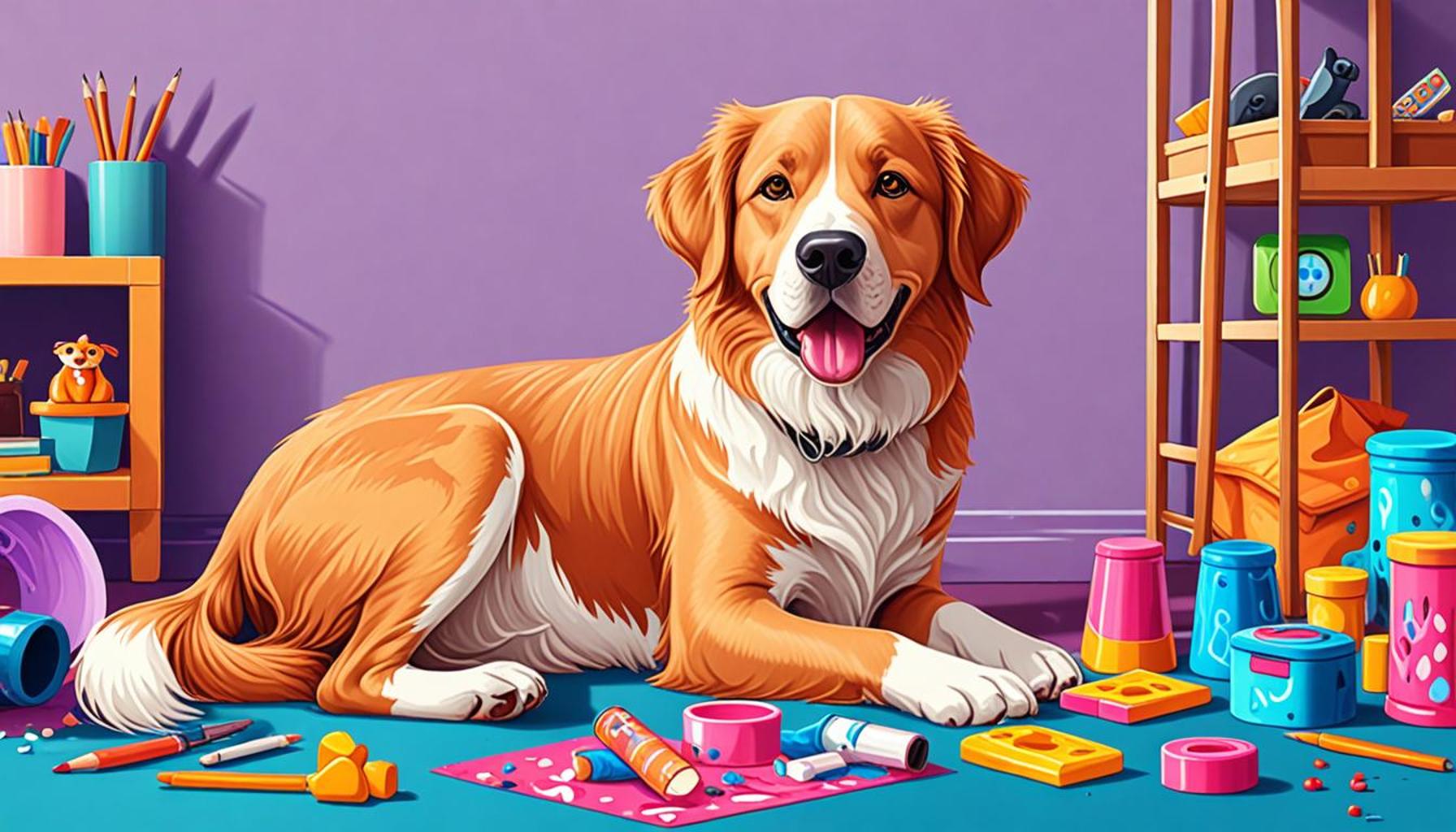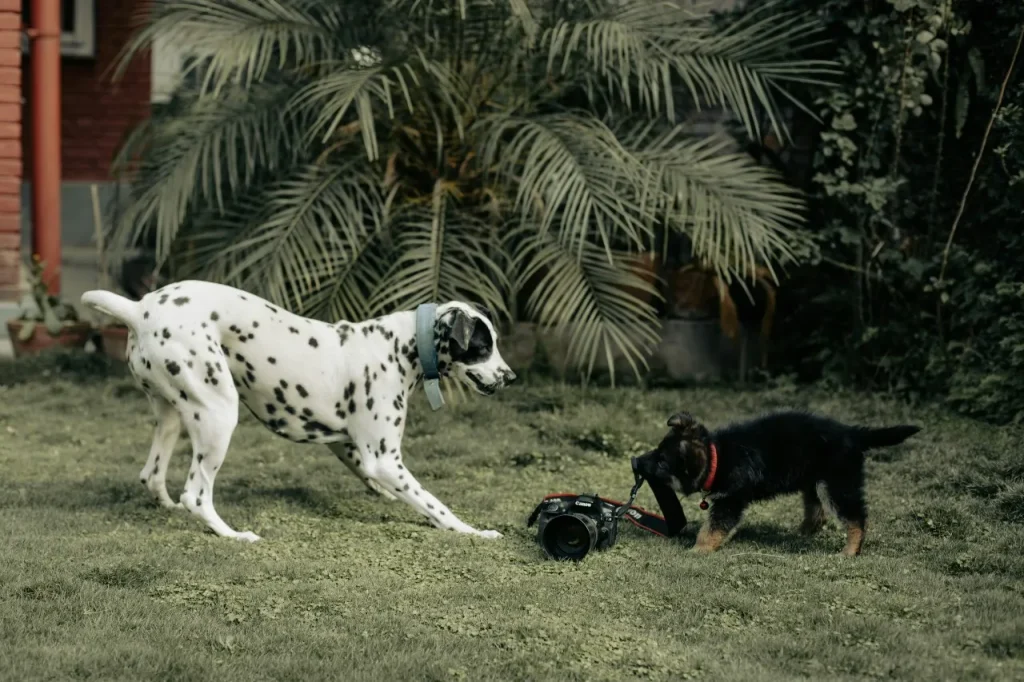Behavior modification techniques for dealing with separation anxiety in pets

Understanding Separation Anxiety in Pets
Have you ever returned home to find your pet anxious, distressed, or even destructive? This common scenario often indicates separation anxiety, a condition affecting countless animals across the United States. Pets, particularly dogs, are social creatures that thrive on companionship and can struggle deeply when left alone. In fact, studies estimate that nearly 14% of dogs suffer from some form of separation anxiety, highlighting the significance of this issue. Understanding the underlying causes and symptoms of separation anxiety is crucial for pet owners who want to promote their furry friends’ well-being.
To tackle this condition, behavior modification techniques can significantly help alleviate the stress associated with separation anxiety. These methods focus not only on correcting negative behaviors but also on nurturing a sense of security and confidence in pets. Implementing these strategies can lead to a happier, more balanced life for your animal companion and a calmer home environment.
Key Behavior Modification Techniques
- Desensitization: This technique involves gradually exposing your pet to being alone for short periods before slowly increasing the duration. For instance, you might start leaving your pet alone for just five minutes, then gradually lengthen this time as your pet becomes more accustomed to your departures. The goal here is to allow them to learn that being alone is a normal part of life.
- Counter-conditioning: This method involves reconditioning your pet to associate alone time with enjoyable experiences. For example, you could give your dog a special treat or toy that they only get when you leave. This positive reinforcement can help change your pet’s emotional response and help them feel more secure during your absence.
- Training: Teaching commands and establishing routines can provide much-needed structure. For instance, practicing commands like “stay” or “go to your place” can give your pet a sense of purpose and help them develop confidence. A consistent routine can also signal that you will return, which can ease anxiety.
Discovering the right combination of behavior modification techniques requires patience and understanding. Not every technique will work for every pet, as individual animals have their own unique sets of experiences and sensitivities. Therefore, it is essential for pet owners to observe their pets closely and adjust their approach as needed. Additionally, seeking advice from a veterinarian or a professional animal behaviorist can provide further insights tailored to your pet’s specific situation.
By exploring and implementing these techniques, pet owners can find practical solutions that cater to their pets’ unique needs. Beyond simply treating the symptoms of separation anxiety, these strategies aim to foster a more harmonious relationship between pets and their owners. Striving for long-lasting behavioral changes can significantly improve the quality of life for both pets and their families.
Ultimately, identifying and addressing separation anxiety is an ongoing process that can lead to a more peaceful home environment. With patience, dedication, and the right techniques, you can help your pet cope better with their anxiety and thrive in your loving care.

DISCOVER MORE: Click here for financial resources to simplify pet adoption
Effective Strategies for Managing Separation Anxiety in Pets
When it comes to alleviating separation anxiety in pets, understanding and implementing effective behavior modification techniques can make all the difference. While each pet’s response may differ based on their background and temperament, a variety of strategies can help create a more relaxed environment for both owner and pet. By integrating these techniques into your pet care routine, you can foster positive changes in behavior and enhance your pet’s overall quality of life.
Start with Gradual Departures
One of the most recommended approaches for dealing with separation anxiety is desensitization. This technique involves gradually increasing the time your pet spends alone, helping them slowly adjust to your absences. You might initiate this process by leaving your pet alone for just a few minutes while staying nearby, allowing them to see that you will return. Over time, and with consistent practice, you can extend the duration of your absences. For example, you can progress from five minutes to ten, and eventually to thirty or more, depending on your pet’s comfort level. This gradual approach helps your pet learn that being alone is not a cause for panic.
Reinforce Positive Behaviors
The technique of counter-conditioning offers another avenue for easing anxiety. By creating a positive association with alone time, you can help your pet feel more secure. For instance, providing a special toy or treat that is only available when you leave can make your departures less intimidating. Every time you step out the door, your pet will begin to associate your absence with a delightful experience, thereby reducing stress. Additionally, consider using interactive puzzle toys that can keep their minds engaged and distract them from your departure.
Establish Consistent Training Routines
Training is an essential aspect of behavioral modification and can greatly aid in addressing separation anxiety. Teaching basic commands like “sit,” “stay,” or “place” not only provides structure but also fosters confidence in your pet. Incorporating these commands into a routine can help create a predictable environment that reassures your pet you will always return. For example, implementing a routine that includes a set time for play, feeding, and training can enable your pet to feel more secure during your absence.
Consistency is key when employing these behavior modification techniques. Keep in mind that progress may not occur overnight; it can take weeks or even months for your pet to adjust. Therefore, a commitment to patience and perseverance is necessary. Observe your pet’s responses closely and adapt your techniques as needed. If you find certain methods are not working, don’t hesitate to seek guidance from a veterinarian or a professional animal behaviorist, who can provide tailored strategies based on your pet’s unique situation and needs.
By actively engaging in these behavior modification techniques, pet owners can create a supportive environment that reduces the severity of separation anxiety. As you explore these avenues, keep in mind that the journey to managing separation anxiety is a collaborative one—between you and your furry companion. Together, you can build a stronger bond and a more comforting home for your beloved pet.
| Behavior Modification Technique | Description |
|---|---|
| Desensitization | A gradual process where pets are exposed to being alone in short increments, helping them develop confidence. |
| Counter-conditioning | Changing the pet’s emotional response to being alone by associating it with positive experiences like treats or toys. |
| Crate Training | Encourages a safe space for pets, making them feel secure when left alone, thus reducing anxiety. |
| Consistent Routine | Establishing a daily schedule for feeding and walks can help alleviate anxiety through predictability. |
Separation anxiety in pets, particularly dogs, can be profoundly distressing for both the animal and the owner. Implementing these behavior modification techniques can facilitate a more harmonious relationship between pets and their owners. Desensitization is vital; by introducing brief periods of solitude and gradually increasing the duration, pets learn to cope with being alone. Alongside this, counter-conditioning helps modify the pet’s emotional response to separation, linking it to enjoyable experiences, thereby reducing anxiety associations.Crate training also creates a comforting retreat; it gives pets a secure environment to relax when their owners are not home. Lastly, maintaining a consistent routine offers a sense of stability, easing fears about unpredictability. These techniques, when applied correctly, can lead to significant improvements in how pets respond to being alone, ultimately enhancing their overall well-being.
DISCOVER MORE: Click here to find helpful resources
Utilizing Environmental Enrichment and Professional Support
When managing separation anxiety in pets, enhancing the pet’s environment plays a crucial role in improving their emotional well-being. Environmental enrichment involves engaging your pet’s senses through a variety of activities and stimuli. This can help to alleviate boredom and distract them during periods of solitude, thus making your absence less stressful.
Create a Comforting Space
Designate a specific area in your home where your pet can feel safe when alone. This space can include their bed, favorite toys, and perhaps an item with your scent, like an old t-shirt. This familiarity can provide comfort and security. Additionally, consider using a calming pheromone diffuser or spray. These products release synthetic versions of pheromones that can help reduce anxiety in pets. Many pet owners have reported noticeable improvements when using these products, especially during challenging times such as thunderstorms or, notably, when left alone.
Implement Training Games
Incorporating training games into your pet’s routine presents an opportunity to stimulate their mind while strengthening the bond between you two. Games that require focus, such as hide-and-seek or “find the treat,” not only challenge your pet but also provide a sense of accomplishment. Engaging your pet in play before you leave can expend energy and promote relaxation, making the separation period easier to endure.
Professional Intervention and Support
If your pet’s anxiety proves difficult to manage with at-home techniques alone, seeking help from a professional animal behaviorist or a certified dog trainer may be beneficial. These experts can assess your pet’s behavior and offer tailored strategies for addressing anxiety. They often have access to specialized training methods that can assist in behavior modification, such as systematic desensitization and counter-conditioning.
Furthermore, in some cases, veterinarians may recommend therapy pets or medications that can help alleviate anxiety symptoms when behavioral methods are not enough. Research indicates that medications can be particularly effective when combined with behavior modification techniques, offering a comprehensive approach to managing separation anxiety.
Collaborate with Your Vet
Regular check-ins with your veterinarian are vital in managing your pet’s overall health as they navigate anxiety challenges. Discuss any changes in behavior or new techniques you are trying. Your vet can help monitor your pet’s progress and adjust treatment plans as necessary, keeping their mental well-being a priority.
Ultimately, employing these comprehensive behavior modification techniques, coupled with environmental enrichment and professional support, can significantly improve your pet’s capacity to cope with separation anxiety. By fostering a nurturing environment and ensuring your furry companion feels secure, you will be paving the way for a happier and healthier life for both of you.
DISCOVER MORE: Click here to learn about balanced diets for pet health
Conclusion: Empowering Your Pet Through Understanding and Action
In conclusion, managing separation anxiety in pets calls for a multifaceted approach that empowers both pets and their owners. Understanding the emotional landscape of your furry friend is the first step toward effectively alleviating their anxiety. By integrating behavior modification techniques with environmental enrichment, creating safe spaces, and ensuring ongoing engagement through training games, pet owners can significantly reduce the stresses associated with being alone.
Moreover, enlisting the help of a professional animal behaviorist provides tailored strategies and perhaps opens the door to utilizing proven methodologies such as systematic desensitization and counter-conditioning. These expert insights can make a world of difference and guide owners in implementing effective solutions. Regular collaboration with your veterinarian also plays a crucial role, ensuring that you stay informed about your pet’s health and progress throughout the journey.
Ultimately, addressing separation anxiety is not merely about treating a condition, but about fostering a deeper bond between you and your pet. As you explore these techniques, remain patient and observant of their individual needs. With time, love, and a strategic approach, you can help your pet navigate their fears while creating a peaceful environment within your home. As a result, both you and your beloved companion can enjoy a more harmonious and fulfilling relationship, turning those lonely hours into moments of growth, safety, and affection.


